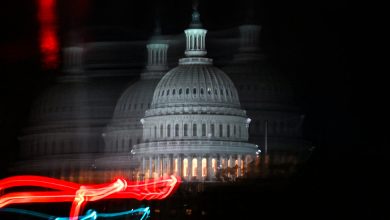California, Land of the Car, Could Soon Have Speed Cameras

California likes to think of itself as a cutting-edge lab for policymaking, a place where laws get passed first and then copied around the country.
But for years, it has banned a basic measure used in many cities to slow drivers: the humble speed camera. In the state that practically invented car culture and the thrill of hitting the open road, speed cameras have faced steep resistance.
That could now change, as a bill to install cameras on a trial basis has landed on Gov. Gavin Newsom’s desk at a moment when pedestrian deaths are spiking nationwide, but especially in California.
Fueled by faster, riskier drivers, bigger vehicles and less police enforcement of traffic laws, pedestrian deaths nationwide rose 77 percent to 7,624 deaths from 2010 to 2021, according to federal data.
In California alone, 1,100 pedestrians died in crashes last year, according to the Governors Highway Safety Association, a nonprofit that represents states’ safety offices.
The legislation on Governor Newsom’s desk, which he has until Oct. 14 to sign or veto, would allow a handful of cities including San Francisco and Los Angeles to install cameras on a trial basis. A spokeswoman for the governor said he doesn’t comment on pending legislation.
If signed, the legislation would allow California to join 205 communities in 21 states where speed cameras are in use and have been widely credited with slowing drivers.
Some of the loudest supporters of the bill are families of victims who have been killed by cars.
Liz Chavez struggles to talk about the worst day of her life: May 13, 2013, when a speeding driver in a Lexus S.U.V. struck and killed her 5-year-old daughter in a school crosswalk in San Jose, Calif.
That afternoon, Aileen and her younger sister Ariana were walking with Ms. Chavez’s sister-in-law to pick up their older sister from school. The driver struck all three, instantly killing Aileen. Ms. Chavez’s sister-in-law ended up in the hospital with broken ribs, perforated organs and a concussion. Ariana also suffered a concussion.
Ms. Chavez, who still cries when saying her daughter’s name, has photos of Aileen around her home and talks about her often to her youngest child, 8-year-old Alexis. She tells him about how Aileen was a shy, quiet girl who loved soccer and gospel music and carried a Bible with her wherever she went.
“Even though he didn’t get to meet her, he says he misses her,” Ms. Chavez said.
Ms. Chavez has since traveled to the Capitol building in Sacramento repeatedly to try to convince politicians to allow speed cameras.
“It might not reduce the number of deaths to zero,” she said. “But this does actually work.”
Previous efforts dating back six years have failed after opponents expressed concerns about privacy and equity.
Human Rights Watch sent a letter earlier this year to the Senate saying speed cameras would increase the surveillance state and issue fines to people who can’t afford them. “Communities need investments in public transportation and traffic calming infrastructure — not cameras — to keep them safe,” the group said in the letter.
In 2014, the city of San Francisco committed to a plan to eliminate traffic deaths by the end of 2024. With just about a year left to that deadline, the goal remains far out of reach.
In 2014, 31 people died in traffic crashes, with 21 of them being pedestrians. Last year, 39 people, including 20 pedestrians, died in collisions.
So far this year, there have been 14 pedestrian deaths — including a 4-year-old girl being pushed by her father in a stroller near the Giants baseball stadium in August.
“The fact that so many innocent lives are lost from something that’s preventable is honestly criminal and heartbreaking,” said Jodie Medeiros, executive director of Walk San Francisco, a pedestrian advocacy nonprofit.
The speed camera program would not be run by the police, but by cities’ transportation departments.
Drivers going 11 miles per hour above the posted speed limit would receive tickets, with fines starting at $50 and increasing for higher speeds. They would be like parking tickets, with no points being added to one’s driving record. The program would allow cities to reduce fines for low-income people or allow them to complete community service hours instead.
Other cities like New York have had speed cameras for years. A decade ago, Juan Martinez, a former policy director in New York City’s Department of Transportation, helped pioneer the cameras in school zones. There are now more than 2,000 around the city.
As drivers became aware of them, fewer tickets were issued, and the cameras were proven to lower drivers’ speeds, said Mr. Martinez. On average, speeding at fixed camera locations has dropped 73 percent since the cameras were installed.
Pedestrian deaths are still a major issue in the city, but the number has come down since cameras were introduced. Last year, 118 pedestrians died in New York City, compared to 184 in 2013.
“If you care about preventing people from getting killed in crashes, the thing you do is focus on speed,” Mr. Martinez said.





